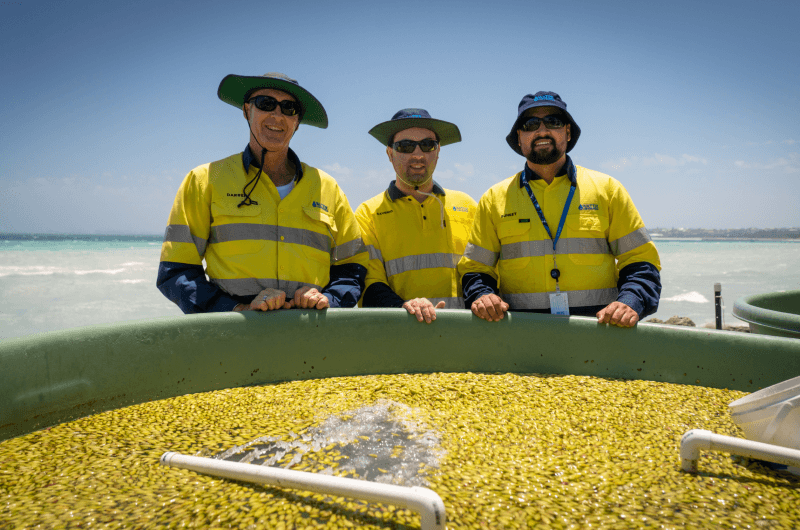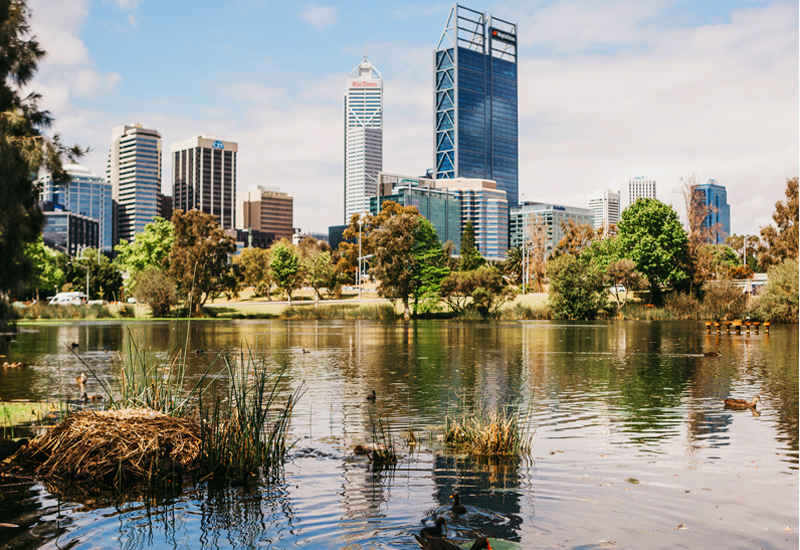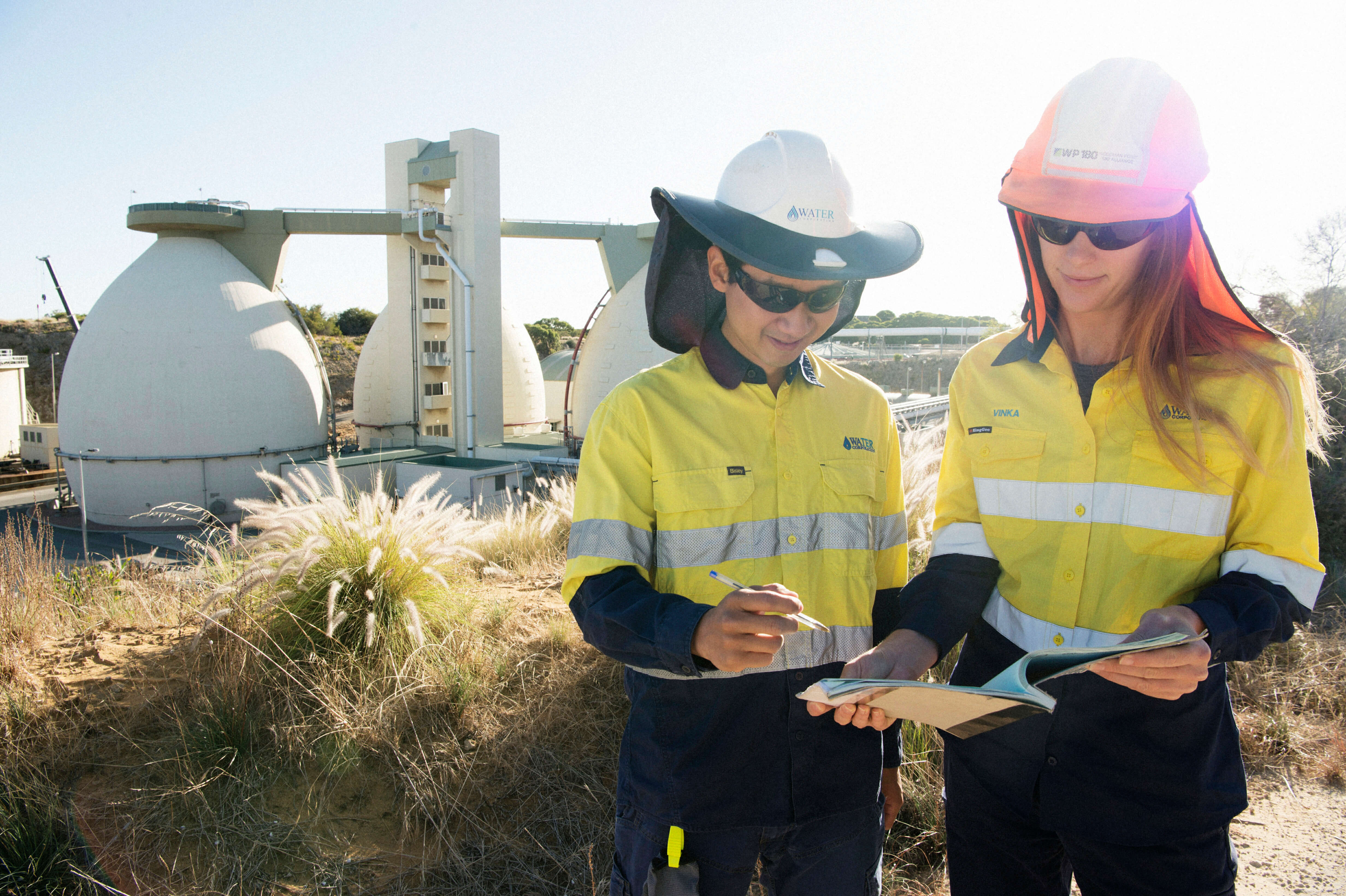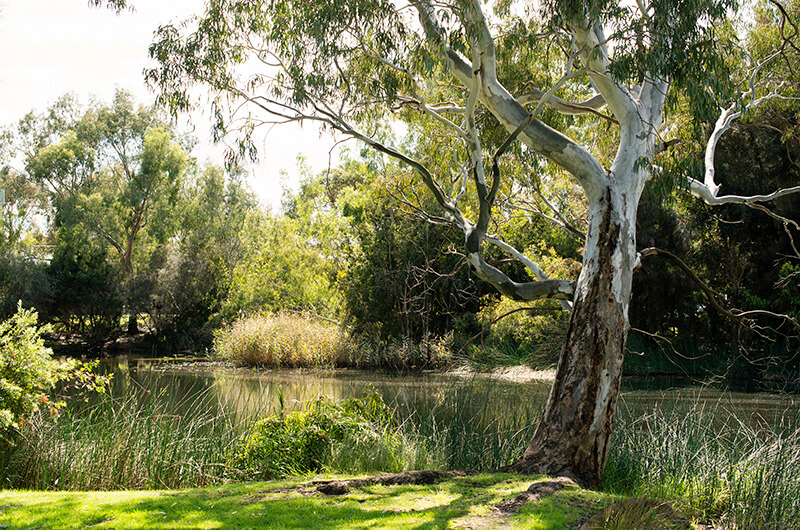Creating positive impact
We have a large environmental footprint. Our work spans 2.6 million sq km. We source water from seawater desalination, groundwater and dams. We have 112 treatment plants across the state to process and recycle water. We also release water back to the environment. This means we need to reduce our impact wherever possible.
Here’s how.
Ozfish Seeds for Snapper
We partner with OzFish Seeds for Snapper program. This is one of Australia’s largest seagrass restoration projects. Every summer, volunteers collect more than 1 million seagrass seeds in Cockburn Sound. The marine plants are a vital habitat for pink snapper and other marine species. Seagrasses also help prevent coastal erosion, store carbon and improve water quality. However, its presence in Cockburn Sound has declined since the 1960s.
We support this partnership through funding and share our in-house engineering expertise to achieve better environmental outcomes for the Ozfish.
Seagrass (Posidonia australis) fruit once a year. During this time, OzFish volunteers get out on the water to collect seagrass fruit. Divers and boaters collect the fruit in nets to harvest. Once the fruit matures, it's processed in large onshore tanks. The seeds are then dispersed in areas ideal for seagrass meadow restoration. OzFish volunteer scientists and University of Western Australia (UWA) researchers continually monitor the area.
Developed with UWA, this approach has increased seedling density by up to 2,000%. More than natural regrowth!

Water Corporation engineers collecting seeds
No net clearing
We need to clear land each year to meet the water demands of the state. This is unavoidable. However, not without understanding our impact on biodiversity throughout these disruptions.
To minimise harm to the environment, we carefully plan and manage each project. Some of the actions we take include fuel reduction, fire protection, and pest and weed control. We also voluntarily commit to counterbalance our impacts beyond legislative requirements.
Revegetating Gnangara
Caring for our valuable groundwater systems is vital. We're currently revegetating around the Gnangara system with native species. This self-guards the long-term, sustainable use of the groundwater system for Perth.
Decreased rainfall and increased population has reduced recharge to the aquifer. This has led to lower groundwater levels. Pine plantations restrict recharge by “sucking up” large amounts of groundwater.
So far over 60 hectares of harvested pine plantation have been planted with native species and will support the reestablishment of native vegetation over coming years.

Perth city above Gnangara groundwater system
Lake Bryde Landscape Recovery Program
Lake Bryde is a biodiversity hotspot. The catchment provides habitat for native mammals, birds, reptiles and frogs species. More than 1,000 vascular plant species are also supported.
In partnership with the Department of Biodiversity, Conservation and Attractions (DBCA) we've revegetated over 100 hectares at Lake Bryde. This important work will increase the percentage of native vegetation within the catchment.
Wasting less waste
We manage over 100 wastewater treatment plants. In 2019, we launched an investigation into the environmental outcomes of our operations. We analysed the sources of potential pollution. We also looked at how potential pollution may impact the environment.
This knowledge is the cornerstone to our wastewater treatment management today. And with this knowledge, we continually improve our performance to achieve better environmental outcomes.

Continuous environmental improvement
To reduce our environmental impact, we're always reviewing our environmental performance. We're currently rebuilding our Environmental Management System (EMS). This will align with our new targets, reduces risks and ensure our activities are sustainable.
We discharge treated wastewater to the environment in accordance with Department of Health, Department of Environment Regulation and legislative requirements. Annual environmental reports are also submitted to the Department of Environment Regulation in accordance with the Environmental Protection Act 1986.

Wetland rehabilitation